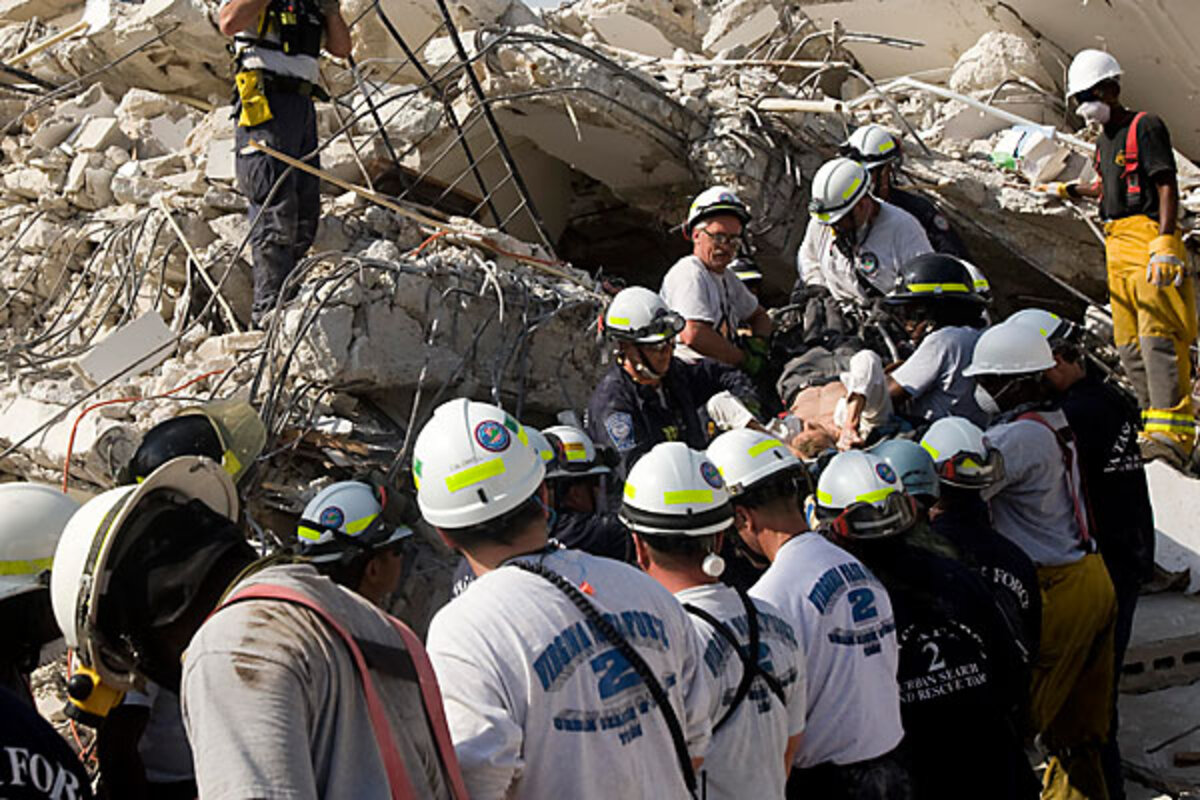Haiti earthquake: How a top UN official was plucked from the rubble
Loading...
| Port-au-Prince, Haiti
There are so many people from so many countries assigned to so many tasks at the sprawling earthquake-relief operations center at the Port-au-Prince airport that few probably know who Jens Kristensen is when he walks by.
But Mr. Kristensen, the senior humanitarian officer with the United Nations stabilization mission in Haiti (MINUSTAH), could very well be the poster boy for the international emergency response that kicked in after Haiti’s devastating 7.0 earthquake on Jan. 12.
Kristensen, a Dane, was one of the hundreds of fortunate individuals who were pulled from the quake’s rubble by search-and-rescue teams that poured into Haiti after the quake. He was one of the few who survived beyond the 72-hour period that rescue experts say is generally the cut-off point for finding buried survivors.
Kristensen was pulled from the rubble of MINUSTAH’s offices by the Fairfax Search and Rescue Squad out of Virginia Beach, Va., on Sunday, Jan. 17 – five days after his work environment crashed down around him.
"The most frustrating thing about the whole experience was the noise – the noise I was sure was keeping people out there from hearing my calls for help,” says Kristensen, referring to the electrical generators and equipment that had been deployed as part of a desperate rescue effort.
At least 70 staff members perished at the UN headquarters in Port-au-Prince’s Christopher Hotel, and 146 are still unaccounted for.
Kristensen was in his third-floor office when the quake struck at around 5 p.m. Within seconds he was buried under 15 feet of rubble, the building’s floors having “pancaked” so that the third floor rested at ground level.
But, he says, “things fell around me in a funny way” so that he was able to improve on his predicament. Most important, he was not injured, though his back still hurts and a wrist was scratched. A jar of instant coffee rolled within his reach, so he could collect his urine if he needed to drink it so as not to expire of thirst. (Thankfully, he says, he did not). Some envelopes fell around him, allowing him to collect the instant-coffee crystals in case he needed to eat them to provide a mental stimulus (he tried one but found it too bitter.)
Most important, he says, he was able after three days to wriggle enough to one side to pull some files off an adjacent cabinet – and clear the way to a small amount of light.
Kristensen says he thought about everything the experts say you think about in such a situation – your loved ones, what you should or shouldn’t have done in life, about death, what might come next. He slept, found the passage of time the most confusing aspect of his incarceration, and was never hungry after the first day.
And he says he never gave up – even when the noisy generators made him scream out for someone to turn them off.
Then, on a Sunday afternoon, he was pulled free.
Kristensen quickly got back to work, now focused on the disaster that for five days imprisoned him. But he made time to go over and thank the rescue team before they returned to Virginia.
“I am truly in awe of those people and what they do with such amazing skill,” he says. “They are living normal lives like you and me, and then at a moment’s notice, they head off to the most difficult of situations to save the lives of strangers -- like me.”




